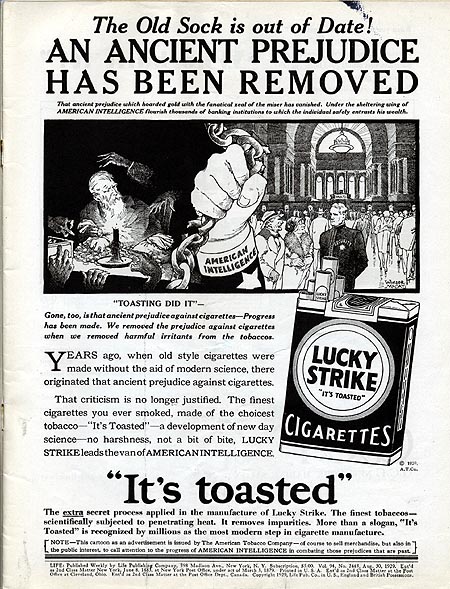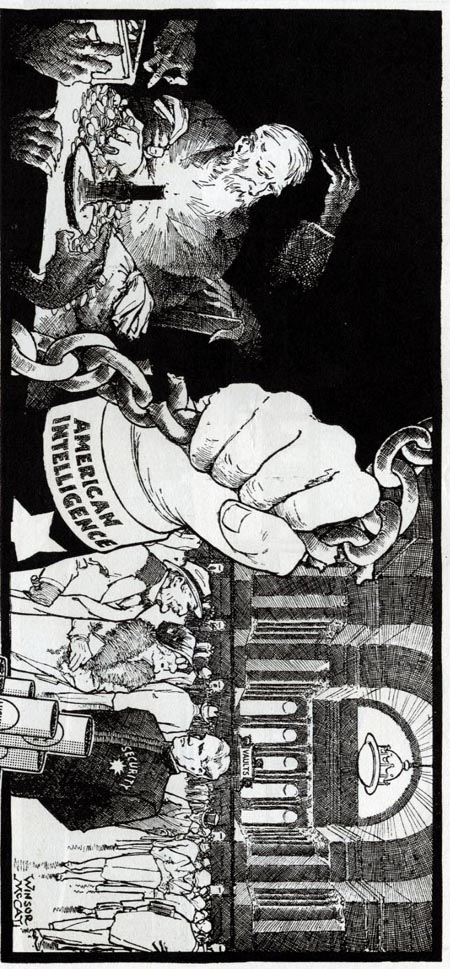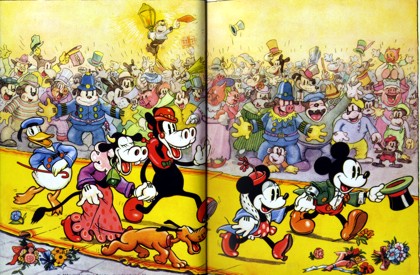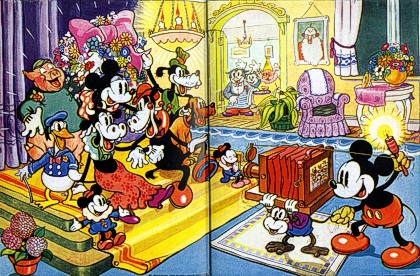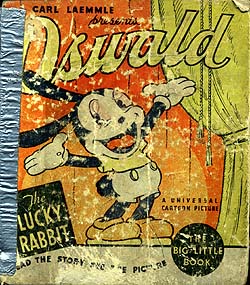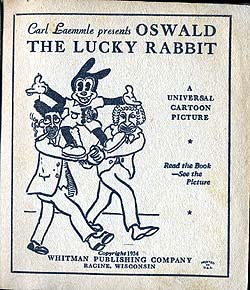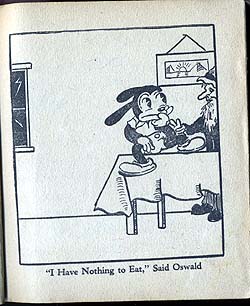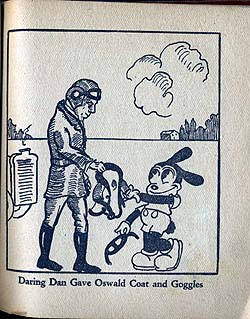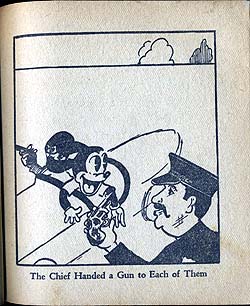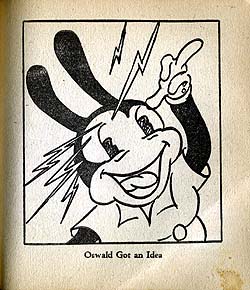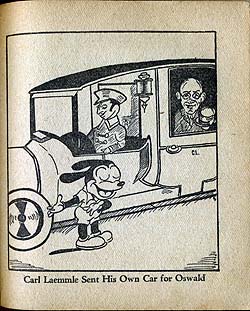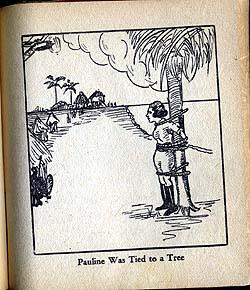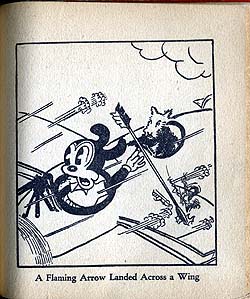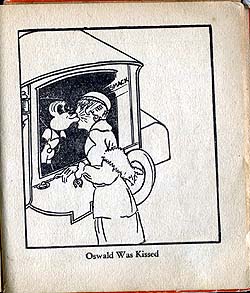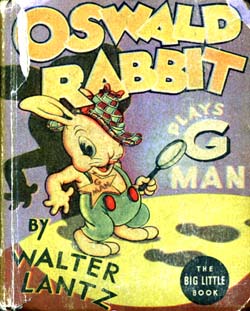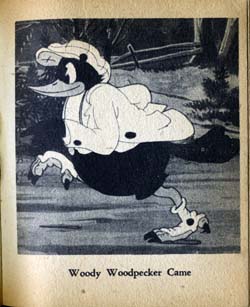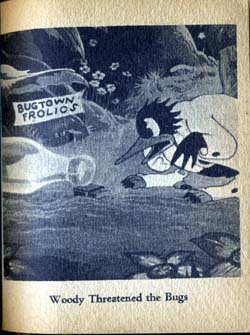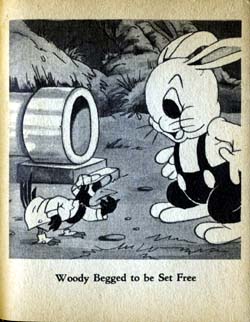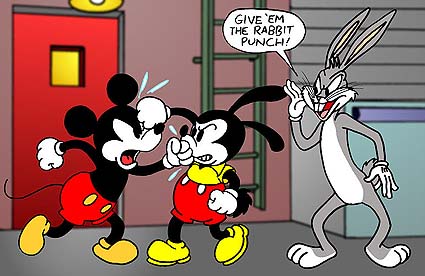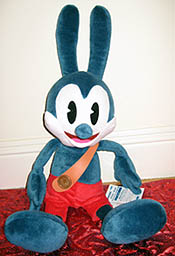On Saturday night, San Francisco’s Cartoon Art Museum held a benefit at Pixar in Emeryville. (This was the third such event; I wrote about an earlier one here.)
Once again, I was in attendance–and once again, I had a good time.
This one was a bit different than its predecessors. The last Pixar night was held shortly before The Incredibles premiered, and was in part a preview of that film. This time, we got to see a brief trailer for John Lasseter’s Cars, but that was it as far as stuff relating to the next Pixar feature went. (The art show from Incredibles which we saw last time was still up.)
I don’t think this was entirely because the studio doesn’t want to talk about Cars yet, since I’ve been to two public events (the less-than-spectacular Wondercon panel mentioned by Mike Barrier in a recent post, and an earlier session at an illustration conference, which dug into the film in some detail).
Unlike the earlier benefits, the bulk of last night’s presentation was done by one guy–Michael Johnson, a Pixar technical guy who’s also a board member at the museum. That was fine; he did a great job, giving a talk that was about both Pixar’s film-making process and its perspective on the world.
He began by stating three Pixar rules of success:
1. Casting, casting, casting. (ie, nothing is more important than the team you hire)
2. Hire people smarter than yourself.
3. Art as a team sport. (“51 percent is plays well with others.”)
One interesting thing about these three rules: They’re really one rule, since they could be summed up in one four-word one, namely Hire a smart team. Which sure seems to work for Pixar, and which is souund advice for any sort of creative or corporate endeavor.
Johnson showed some good clips as part of his talk, including several minutes of Andrew Stanton pitching Finding Nemo. (He was fabulous, and watching him in action made me wish that footage survived of Walt Disney in action during 1930s story conferences).
Brad Bird did about 3,000 drawings simply while reviewing work on The Incredibles (sketching with an electronic pen on top of CGI frames), said Johnson; he showed us a rapid-fire selection of those quick Bird drawings.
Other tidbits:
* Johnson said that all Pixar productions begin as 2D ideas. Some of the artists who work on ideas like to use real-world art materials; others work digitally, using Wacom’s Cintiq tablets. That’s fine: “We take no position on paper.”
* He showed a great little film about all the work that went into giving The Incredibles‘ Violet plausible long hair. It had never been done before and was a huge technical challenge: “Violet’s hair brought this production to its knees.”
* The DVD editions of Pixar movies are produced at the same time as theater ones, and are actually separate renderings composed for a TV’s aspect ratio. “We do it because we can.”
* Random quote: “We don’t want real-looking humans–they’re kind of creepy…reality is just a useful measure of complexity.”
* Another random quote: Effects animators “animate what the animators don’t want to animate.”
* Brad Bird and Andrew Stanton like to work with a traditional movie script; “John Lasseter, not so much.”
After Johnson’s talk, we saw One Man Band, the new Pixar short which will run with Cars. It’s fun and funny, with a storybook-like look that’s quite different from other Pixar work–and has, in a little girl character, one of the best actors ever to appear in CGI. Like all Pixar films, it also has sound that’s as rich, clever, and carefully thought-out as the visuals.
We then heard from co-director Mark Andrews and animator Angus McLane, and then we saw the short again.
One notable Pixar issue barely came up during the formal presentation: the little fact that it’s being acquired by Disney. But the evening ended with the Pixar staffers hobnobbing with attendees, and many of the questions focused on the merger.
Johnson said Pixar does want to make some sequels to its films, and that the studio, which is still a fairly small operation, will likely grow. He said he’s having fun talking to counterparts at Disney; Pixar is by necessity a secretive place, and he thinks it’ll be nice to have more colleagues to discuss things with. (But just how much sharing of technical know-how between Pixar and Disney will happen is yet to be determined, he said.)
(Side note on Pixar secrecy: Before we were ushered into the studio’s theater, we were wanded…and a guard examined my pen, presumably to make sure it wasn’t some sort of spy device.)
He said that Ed Catmull and John Lasseter have no plans to leave Northern California, but will likely spend a couple of days a week in LA. He also said that he fully expects to be at Pixar ten or twenty years from now: “As long as this place stays the same, this is where we want to be.”
If there’s another Cartoon Art Museum benefit, it’ll presumably be at a Pixar that’s an arm of Disney. I sure hope that there is another benefit, and that I get to go to it–and that the place still feels like Pixar. Much more important, I hope that the studio remains a place where people like Michael Johnson want to work for twenty years–and beyond. Time will tell…

